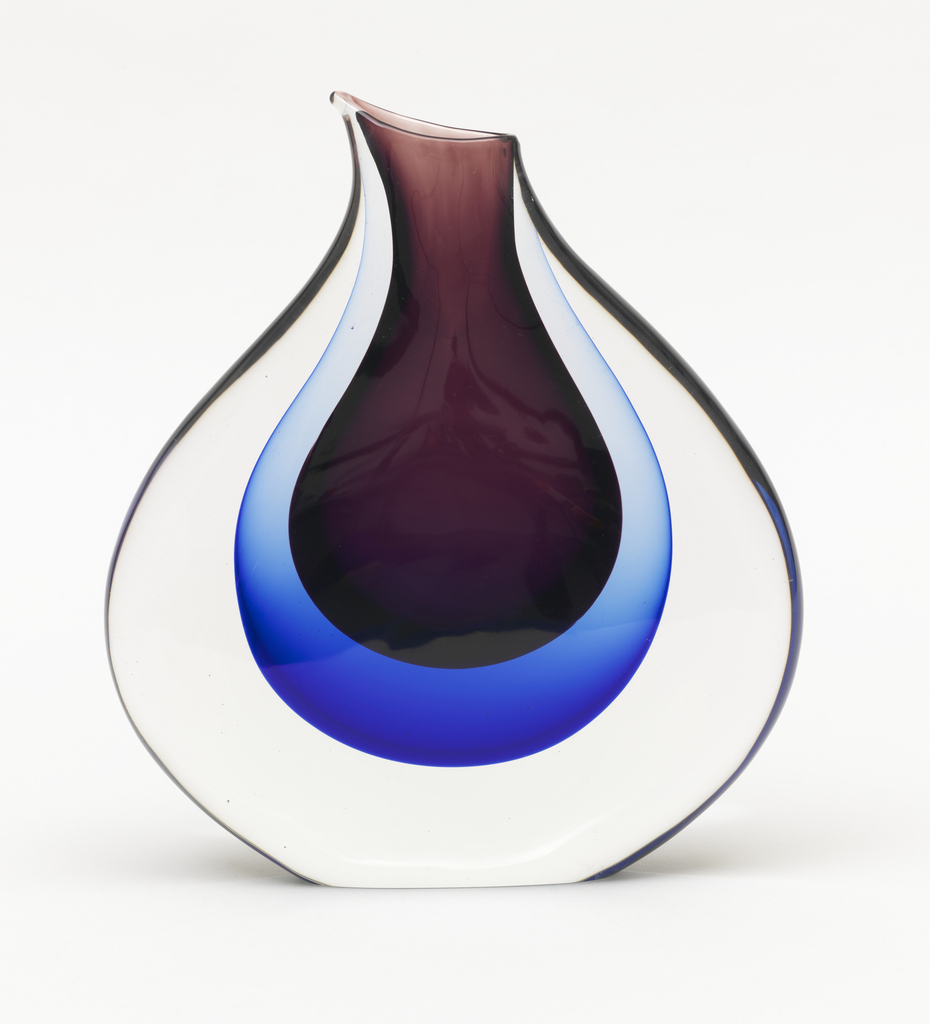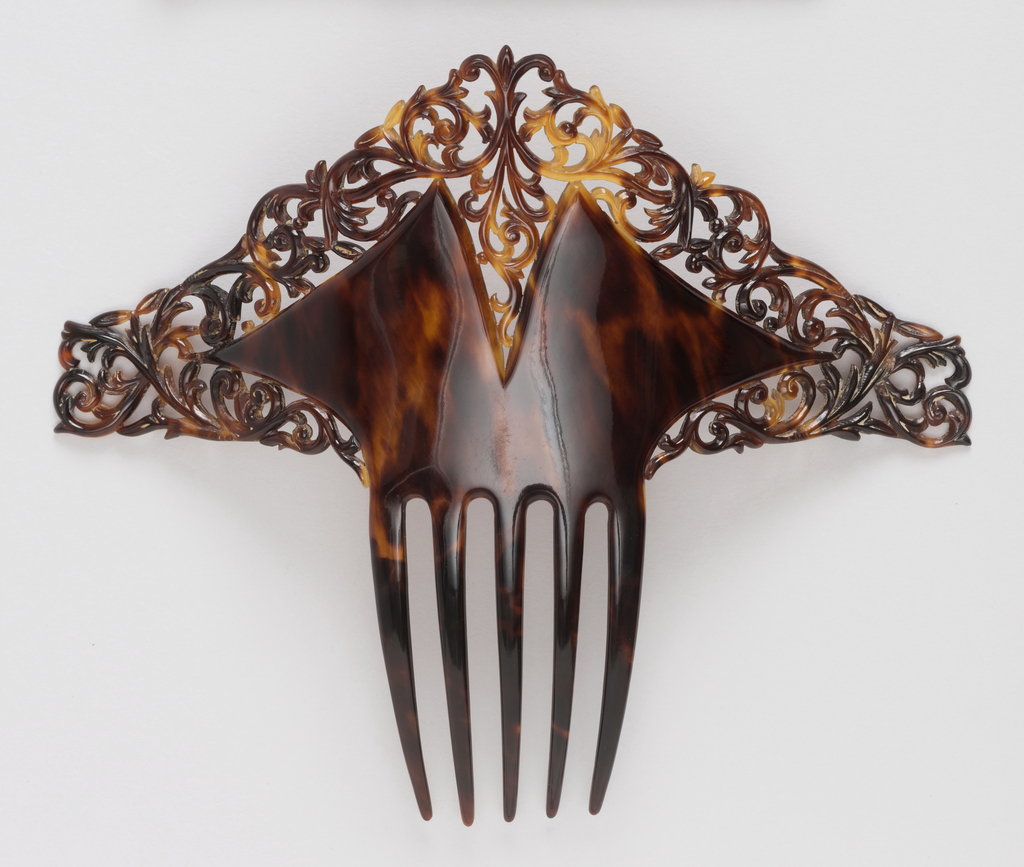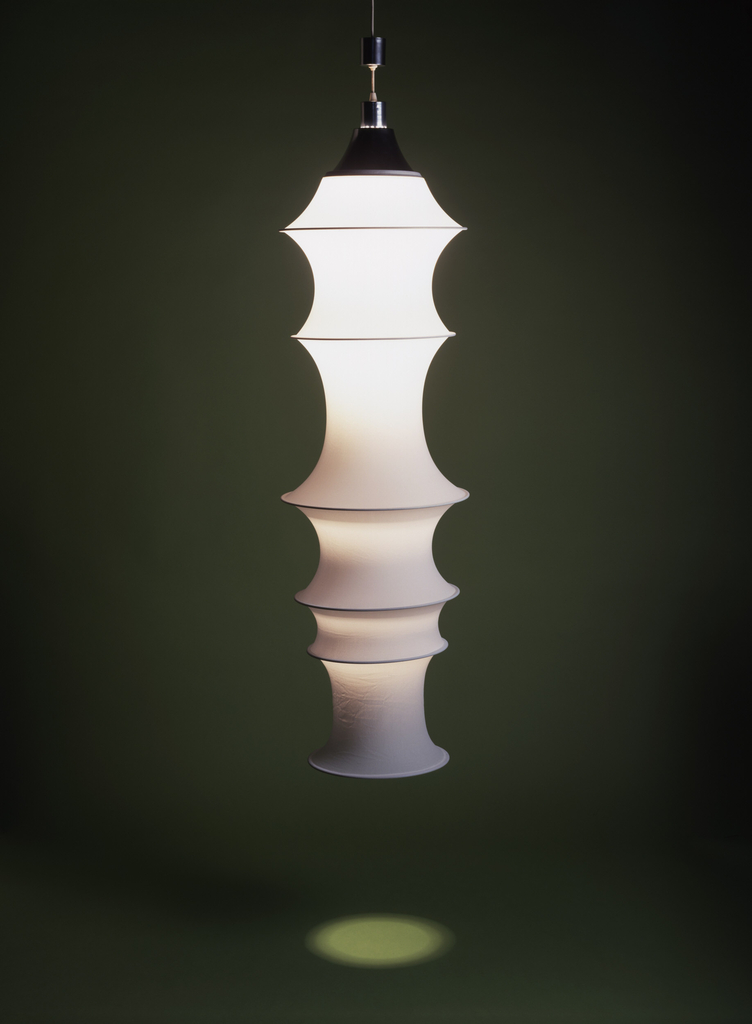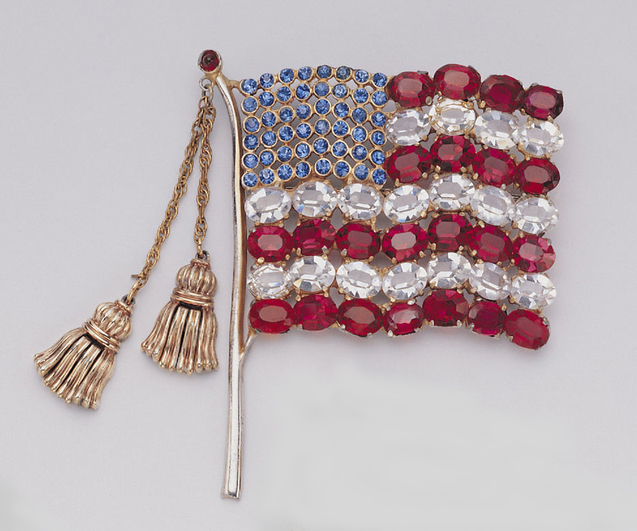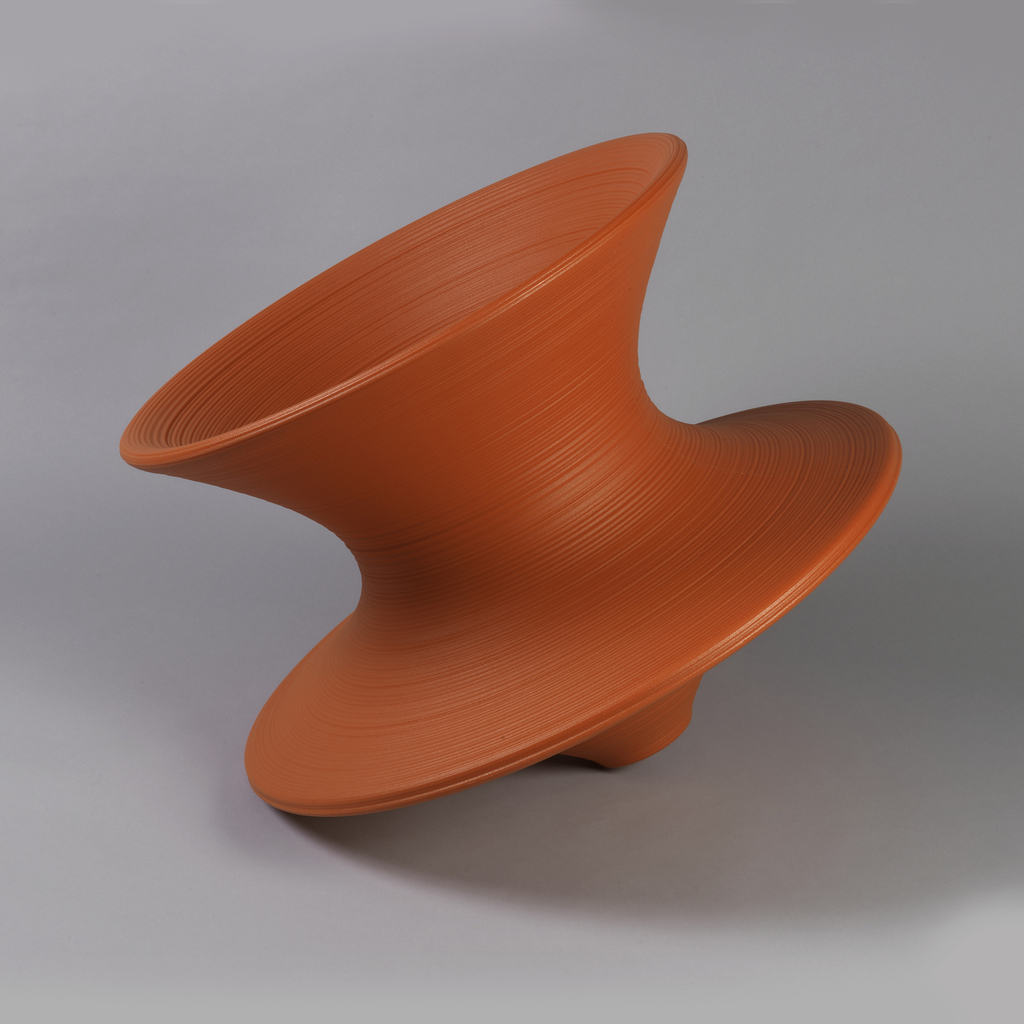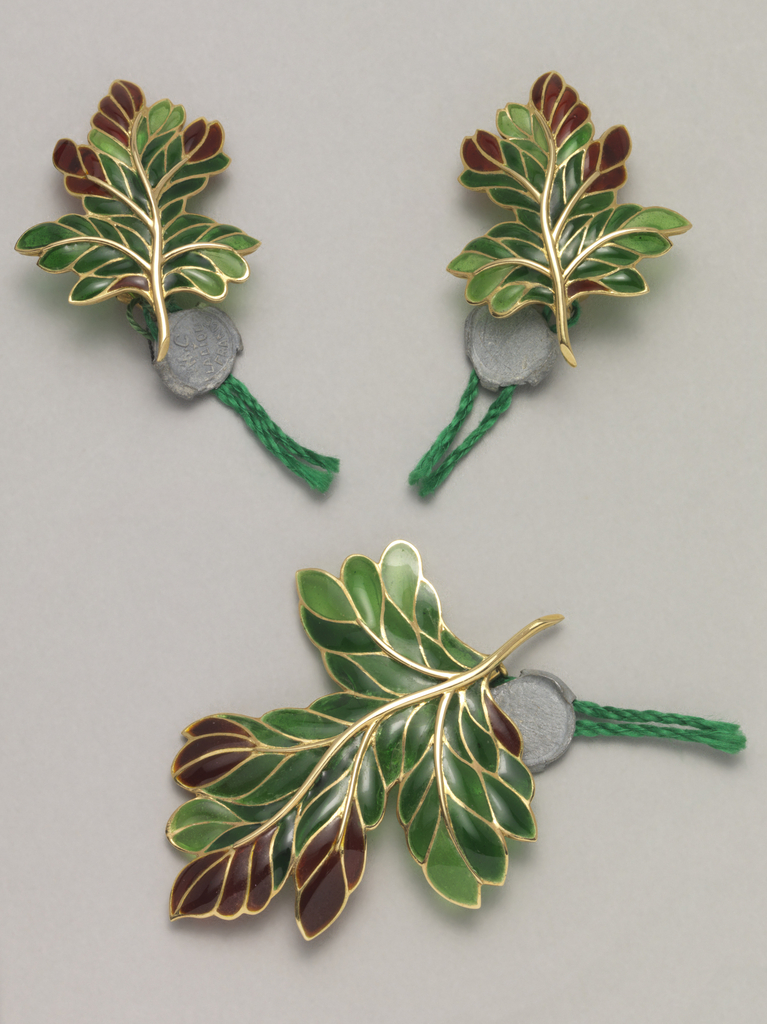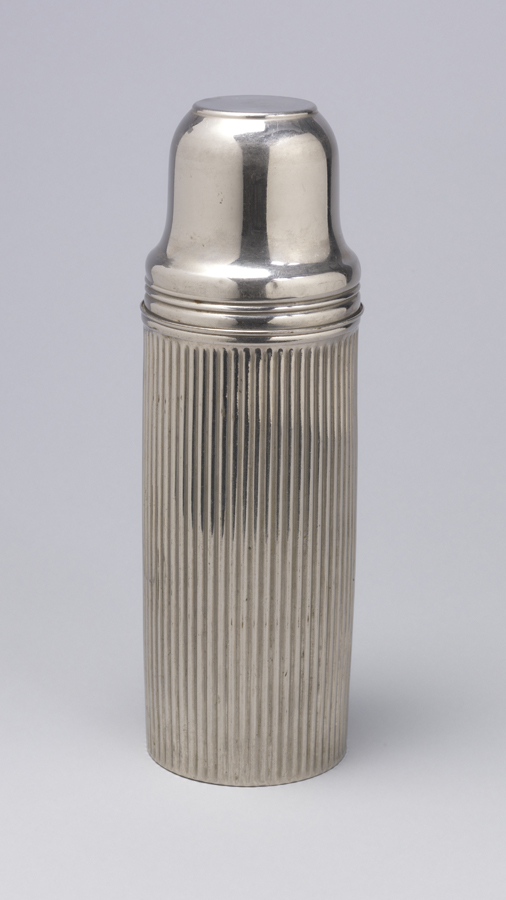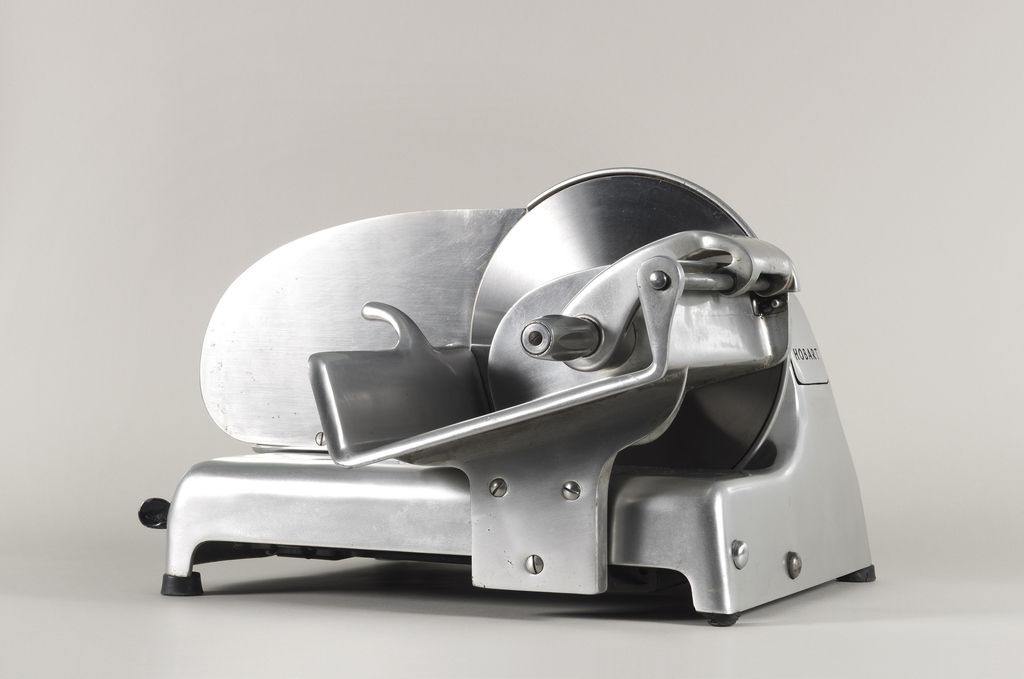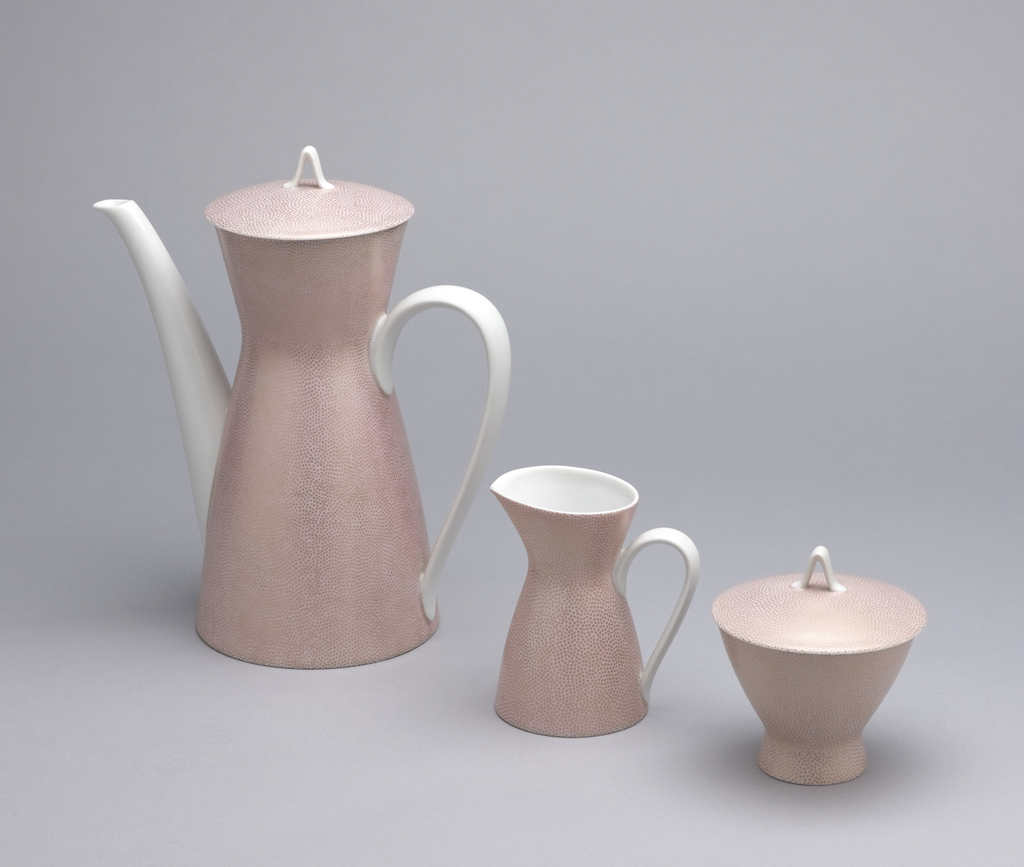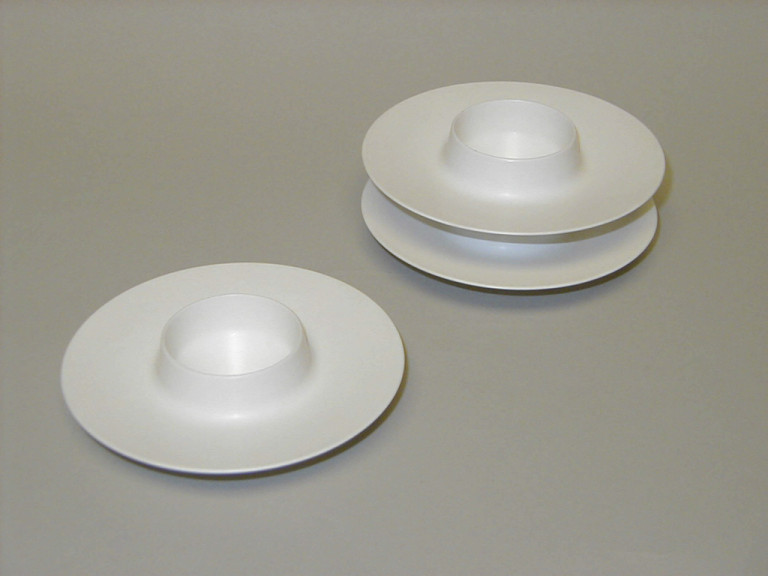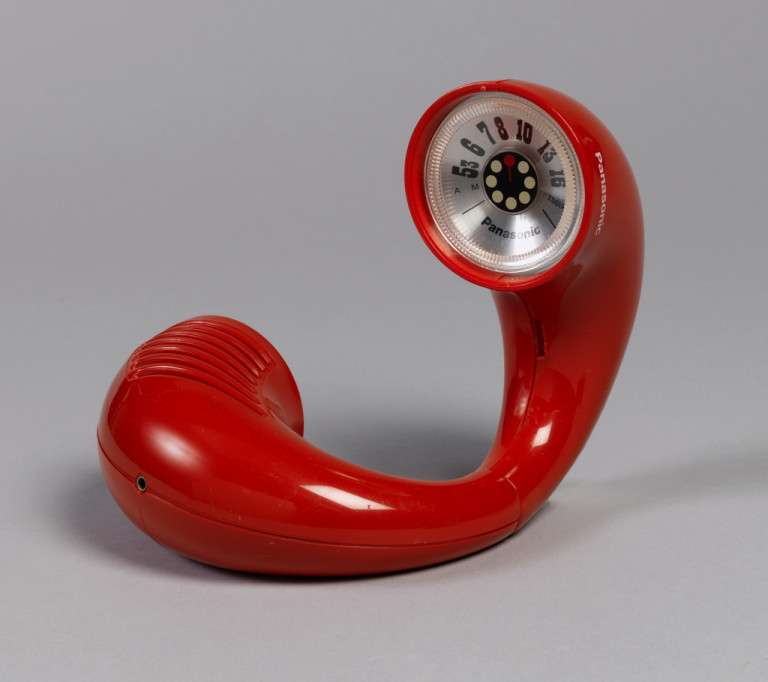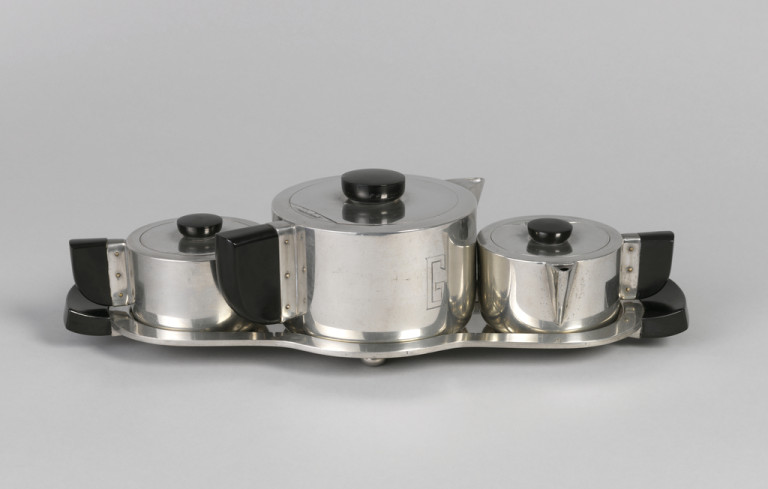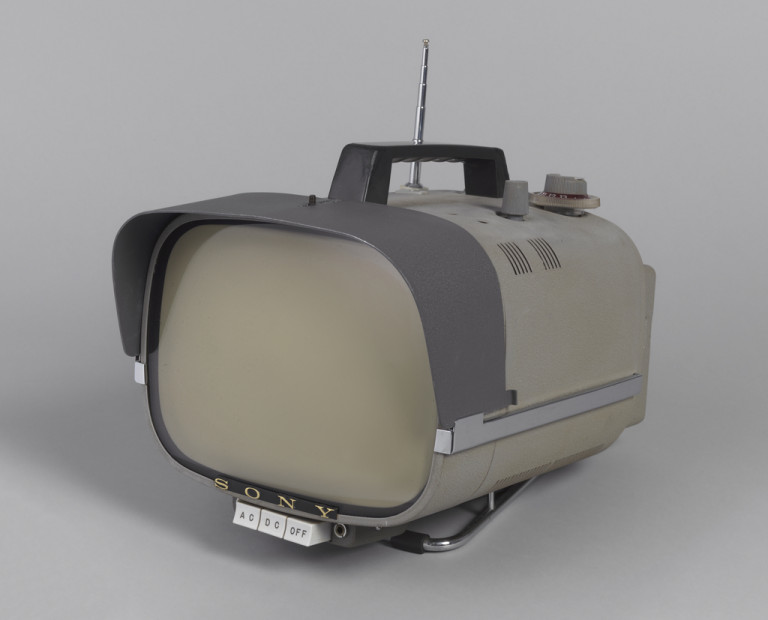Although this vase exemplifies a mid-twentieth century organic style of modernism, it comes from a glass factory with a long tradition of using historical production techniques, located on the island of Murano in Venice, Italy, an important glass-blowing center since the middle ages. In the mid-nineteenth century, Italian lawyer Antonio Salviati developed an interest in glass after...
Some combs are used to groom hair, others to embellish and hold it in place. This decorative lady’s hair comb dates from the nineteenth century. By the 1830s, the austere, classically inspired Empire or Regency fashions of the previous twenty years had been supplanted by exuberant gowns sporting large sleeves and broad skirts. Hairstyles changed...
Electric lighting has existed since the late nineteenth century. Some of the earliest forms exhibited fine Art Nouveau-era workmanship, while decadent Art Deco forms arose in the mid-1920s. A functional, industrially-inspired modernist aesthetic grew in popularity from the 1930s onward. But to my mind, the 1960s was a time of some of the most inventive and clever lighting design, especially for home interiors. Looking to developments...
Patriotic jewelry is a term for works that are inspired by national symbols like flags or their colors. In the United Sates, the American flag, “Old Glory,” along with the American eagle and Uncle Sam, have been among the most popular motifs. While patriotic jewelry in both precious and non-precious materials has been around at least...
Resembling a child’s toy more than a piece of furniture, the whimsical form of the Spun Chair, designed by Thomas Heatherwick and his team, Heatherwick Studio, came about in answer to the question, ‘Can a rotationally symmetrical form make a comfortable chair?’ Heatherwick and his colleagues were initially inspired by the traditional manufacturing process of...
This handbag watch, introduced in 1933 by the Westclox division of the General Time Instruments Corporation, offered the busy modern woman a portable, fashionable and discreet way to manage her time. [1] An alternative to wearing a wristwatch and about the size of a man’s pocket watch, this timepiece was large enough to be easily found...
When Coherent Communications System Corporation decided to create this conference phone their goal was to accommodate the needs of conference calls by incorporating all the necessary telephone elements and electronics into a single, sophisticated speaker/microphone housing. For ease of use and efficiency, the engineers wanted to position the speaker in such a way that the...
An early September drive into New Hampshire took me out of my routine, away from my desk, and encouraged me to slow down and catch the transition from summer to autumn, something I’ve missed in recent years. The warm and intense autumn colors of New England foliage were a special treat, and come to mind as I study,...
Near the end of the nineteenth century, Scottish scientist Sir James Dewar developed glass vacuum bottle technology for his work with liquid gases. The bottle had a function applicable to daily life as well–keeping beverages fresh, meeting a basic need as more people joined the work force, taking meals to their jobs. More people were...
Designed more than 70 years ago, the Model 410 meat slicer, also known as the Streamliner, is not just a utilitarian object for the food service industry. It is also a wonderful example of streamlining, a style of Modernism that combines principles of aerodynamic engineering with geometry, often characterized by smooth rhythmic surfaces and forms...
Industrial designer Raymond Loewy’s career spanned six decades, from about 1920 to 1986, during which he was active in Europe and the United States, with offices in Paris, London, New York, and Chicago. By 1951, he directed a design staff of over one hundred and forty. Loewy and his firm are noted for their prodigious...
Kristian Vedel is primarily known as a furniture designer, trained by the Danish architect-designer Kaare Klint and strongly influenced by Klint's standards of economy, function and simplicity. Vedel established his own studio in 1955. These stacking egg cups are one of his early innovative designs, part of the Gourmet line of plastic tableware from about 1958....
The R-72, also called the “Toot-A-Loop,” is a wonderful example of Pop Art-inspired design. Departing from the square box format, this battery-operated portable radio is shaped like a donut with an off-center hole. It could be worn on the wrist like a bracelet or carried like a purse. Simply by twisting the swivel joint at...
Virginia Hamill, one of the first American women in the field of industrial design, called herself a “decorative art consultant.” Under this broad title, she gained prominence as an exhibition organizer and designer, retail merchandiser, product stylist, and interior designer and educator. She was influential in her use of department store exhibitions to introduce European...
From the archives, an Object of the Day blog post on the portable Sony TV-8-301, the world’s first fully transistorized television set, the first direct-view transistor TV, and the first Japanese TV to be sold in the US. Now on view in Bob Greenberg Selects
